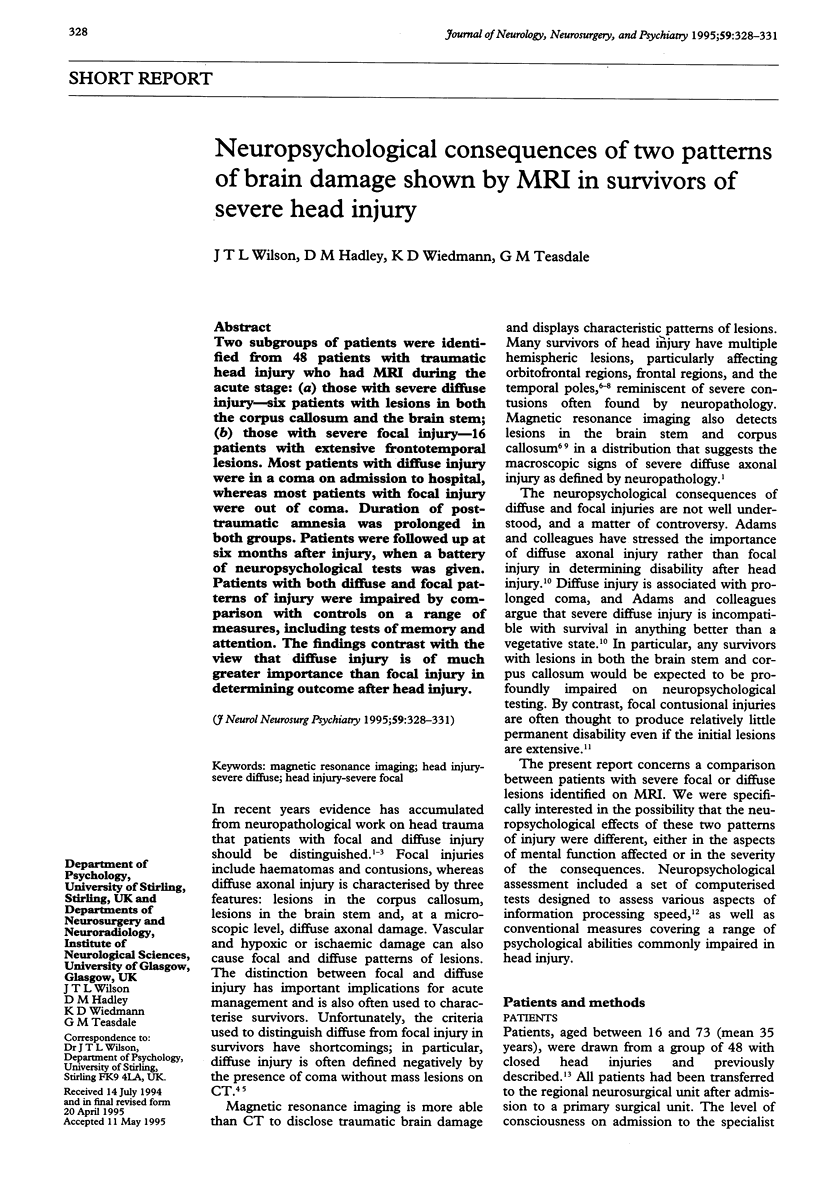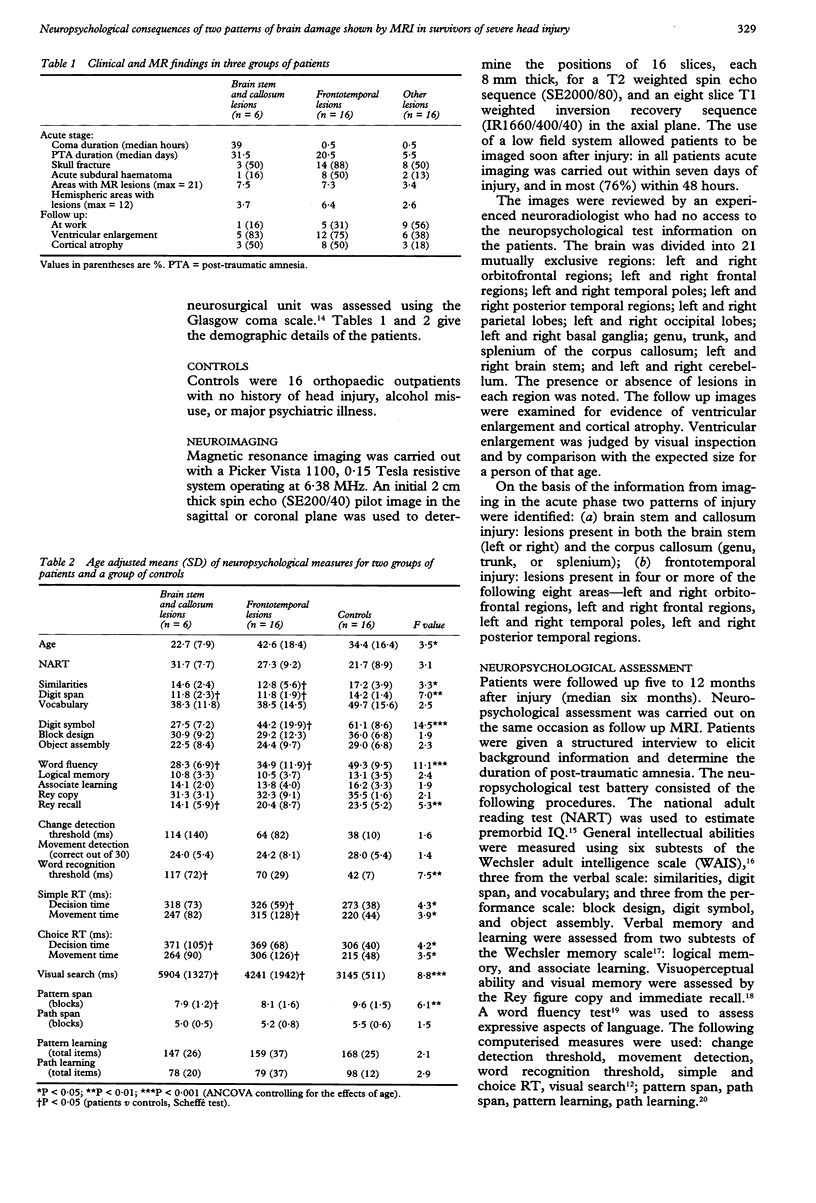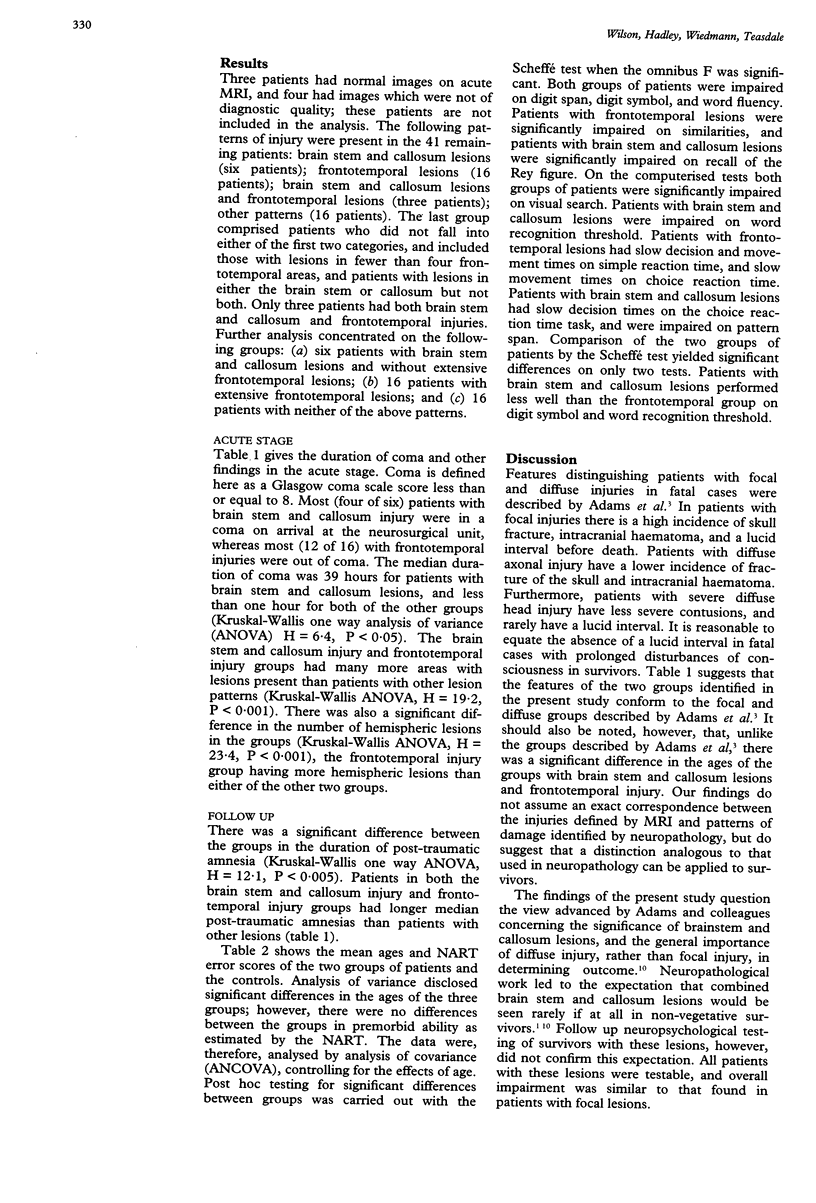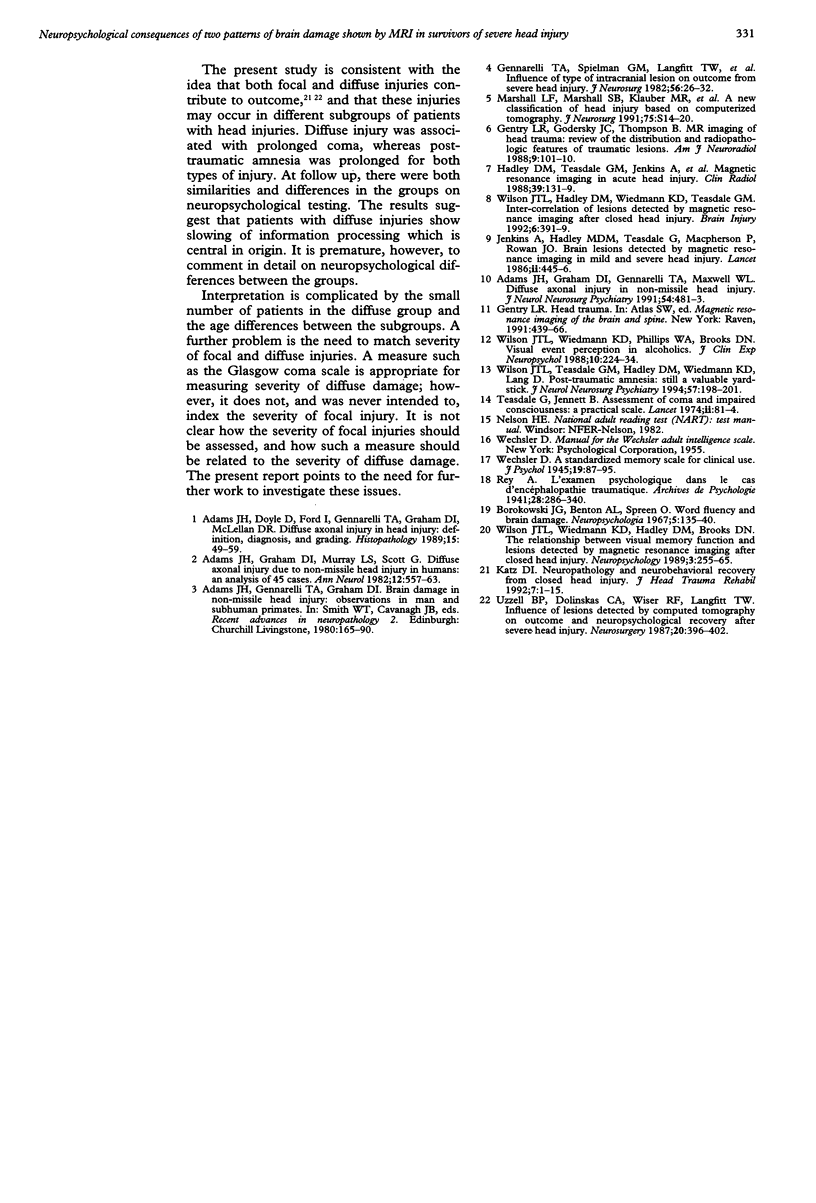Abstract
Two subgroups of patients were identified from 48 patients with traumatic head injury who had MRI during the acute stage: (a) those with severe diffuse injury--six patients with lesions in both the corpus callosum and the brain stem; (b) those with severe focal injury--16 patients with extensive frontotemporal lesions. Most patients with diffuse injury were in a coma on admission to hospital, whereas most patients with focal injury were out of coma. Duration of post-traumatic amnesia was prolonged in both groups. Patients were followed up at six months after injury, when a battery of neuropsychological tests was given. Patients with both diffuse and focal patterns of injury were impaired by comparison with controls on a range of measures, including tests of memory and attention. The findings contrast with the view that diffuse injury is of much greater importance than focal injury in determining outcome after head injury.
Full text
PDF



Selected References
These references are in PubMed. This may not be the complete list of references from this article.
- Adams J. H., Doyle D., Ford I., Gennarelli T. A., Graham D. I., McLellan D. R. Diffuse axonal injury in head injury: definition, diagnosis and grading. Histopathology. 1989 Jul;15(1):49–59. doi: 10.1111/j.1365-2559.1989.tb03040.x. [DOI] [PubMed] [Google Scholar]
- Adams J. H., Graham D. I., Gennarelli T. A., Maxwell W. L. Diffuse axonal injury in non-missile head injury. J Neurol Neurosurg Psychiatry. 1991 Jun;54(6):481–483. doi: 10.1136/jnnp.54.6.481. [DOI] [PMC free article] [PubMed] [Google Scholar]
- Adams J. H., Graham D. I., Murray L. S., Scott G. Diffuse axonal injury due to nonmissile head injury in humans: an analysis of 45 cases. Ann Neurol. 1982 Dec;12(6):557–563. doi: 10.1002/ana.410120610. [DOI] [PubMed] [Google Scholar]
- Gennarelli T. A., Spielman G. M., Langfitt T. W., Gildenberg P. L., Harrington T., Jane J. A., Marshall L. F., Miller J. D., Pitts L. H. Influence of the type of intracranial lesion on outcome from severe head injury. J Neurosurg. 1982 Jan;56(1):26–32. doi: 10.3171/jns.1982.56.1.0026. [DOI] [PubMed] [Google Scholar]
- Hadley D. M., Teasdale G. M., Jenkins A., Condon B., MacPherson P., Patterson J., Rowan J. O. Magnetic resonance imaging in acute head injury. Clin Radiol. 1988 Mar;39(2):131–139. doi: 10.1016/s0009-9260(88)80008-4. [DOI] [PubMed] [Google Scholar]
- Jenkins A., Teasdale G., Hadley M. D., Macpherson P., Rowan J. O. Brain lesions detected by magnetic resonance imaging in mild and severe head injuries. Lancet. 1986 Aug 23;2(8504):445–446. doi: 10.1016/s0140-6736(86)92145-8. [DOI] [PubMed] [Google Scholar]
- Teasdale G., Jennett B. Assessment of coma and impaired consciousness. A practical scale. Lancet. 1974 Jul 13;2(7872):81–84. doi: 10.1016/s0140-6736(74)91639-0. [DOI] [PubMed] [Google Scholar]
- Uzzell B. P., Dolinskas C. A., Wiser R. F., Langfitt T. W. Influence of lesions detected by computed tomography on outcome and neuropsychological recovery after severe head injury. Neurosurgery. 1987 Mar;20(3):396–402. doi: 10.1227/00006123-198703000-00007. [DOI] [PubMed] [Google Scholar]
- Wilson J. T., Hadley D. M., Wiedmann K. D., Teasdale G. M. Intercorrelation of lesions detected by magnetic resonance imaging after closed head injury. Brain Inj. 1992 Sep-Oct;6(5):391–399. doi: 10.3109/02699059209008135. [DOI] [PubMed] [Google Scholar]
- Wilson J. T., Teasdale G. M., Hadley D. M., Wiedmann K. D., Lang D. Post-traumatic amnesia: still a valuable yardstick. J Neurol Neurosurg Psychiatry. 1994 Feb;57(2):198–201. doi: 10.1136/jnnp.57.2.198. [DOI] [PMC free article] [PubMed] [Google Scholar]


